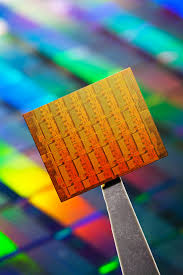CPU / Microprocessor

There are three aspects to consider when evaluating a microprocessor: The processor family, the number of threads, and the speed of the processor. These days the Intel microprocessors will perform about 1/3 more work than an AMD microprocessor operating at the same GHz speed and with the same number of cores. Intel releases new processors every 12-18 months, but some of these releases are just minor updates and in some respects may have some disadvantages when compared to its predecessor. For example, the "Haswell" series was only a slight improvement in performance over the "Ivy Bridge", but it runs much hotter when working hard and this heat triggers a thermal throttling effect that slows down the processor to help control the overheating problem. The thermal throttling renders the performance inferior to the Ivy Bridge predecessor in many situations unless you invest in much better cooling for the processor. However, even with the best cooling the smaller size of the Haswell makes it hard to keep cool. You should consider the current family of Intel microprocessors when making your buying decision.
The second consideration is the number of threads. Microprocessors these days have multiple "cores" and each core can process any type of instruction such that a four core processor can process four simultaneous instructions. The multiple core function has advantages in speeding up how long it takes to perform calculations, but only if the software is written in such a way as to take advantage of multiple cores. When a program is written in multiple "threads" then each thread can use a different core to get the job done. While this is changing, most trading platforms will only operate in a single thread and can therefore only use one core.
Intel and Microsoft Windows now try to share single threaded platforms across all cores in order to save energy. This means that the microprocessor might not reach its full "Turbo" speed. This can be altered by changing the affinity settings in Windows for these platforms, isolating them to one core, thus causing a higher workload on that core and engaging "Turbo". Windows does not remember the affinity settings if the program is shut down, but there are third-party applications you can purchase that will.
